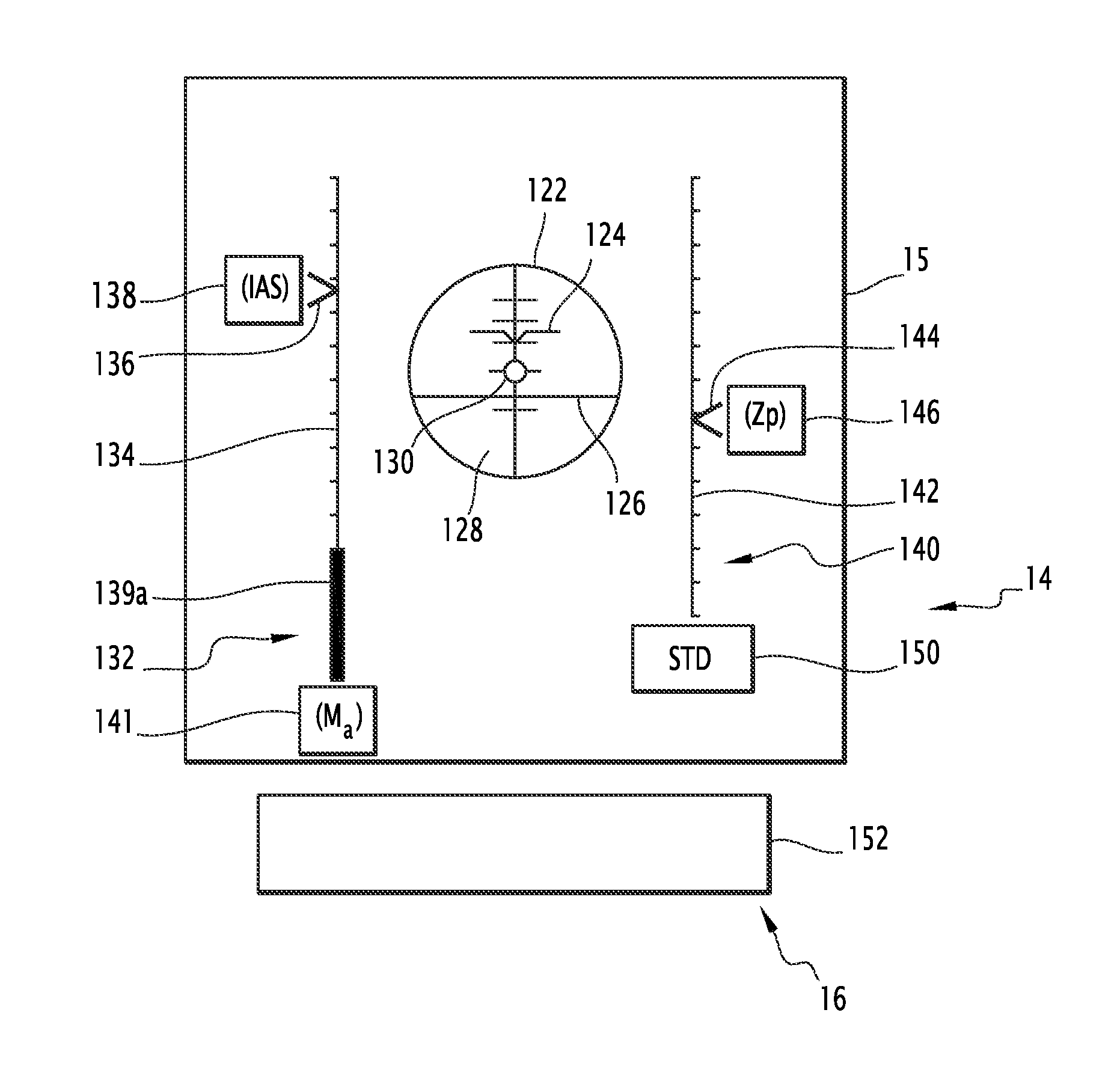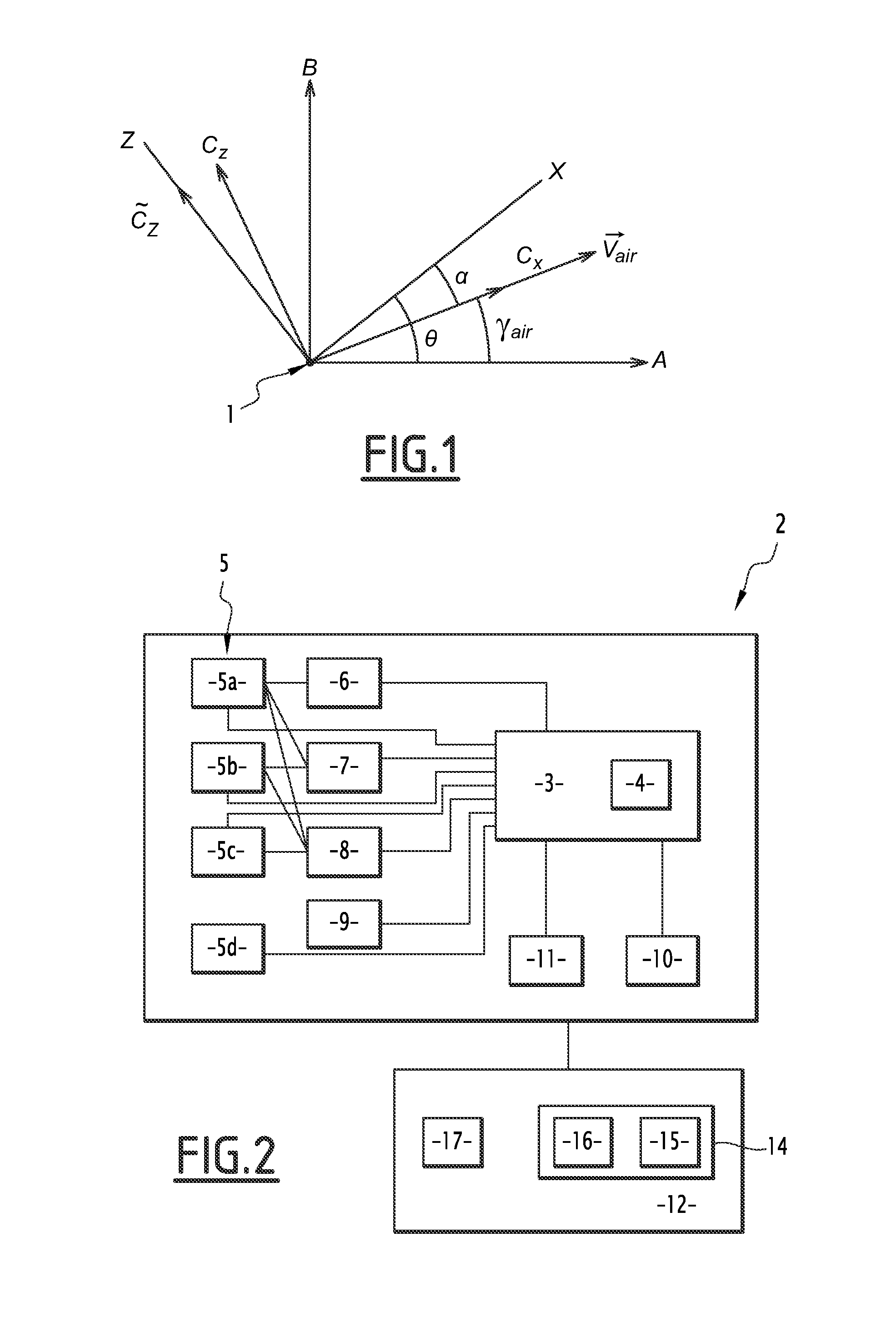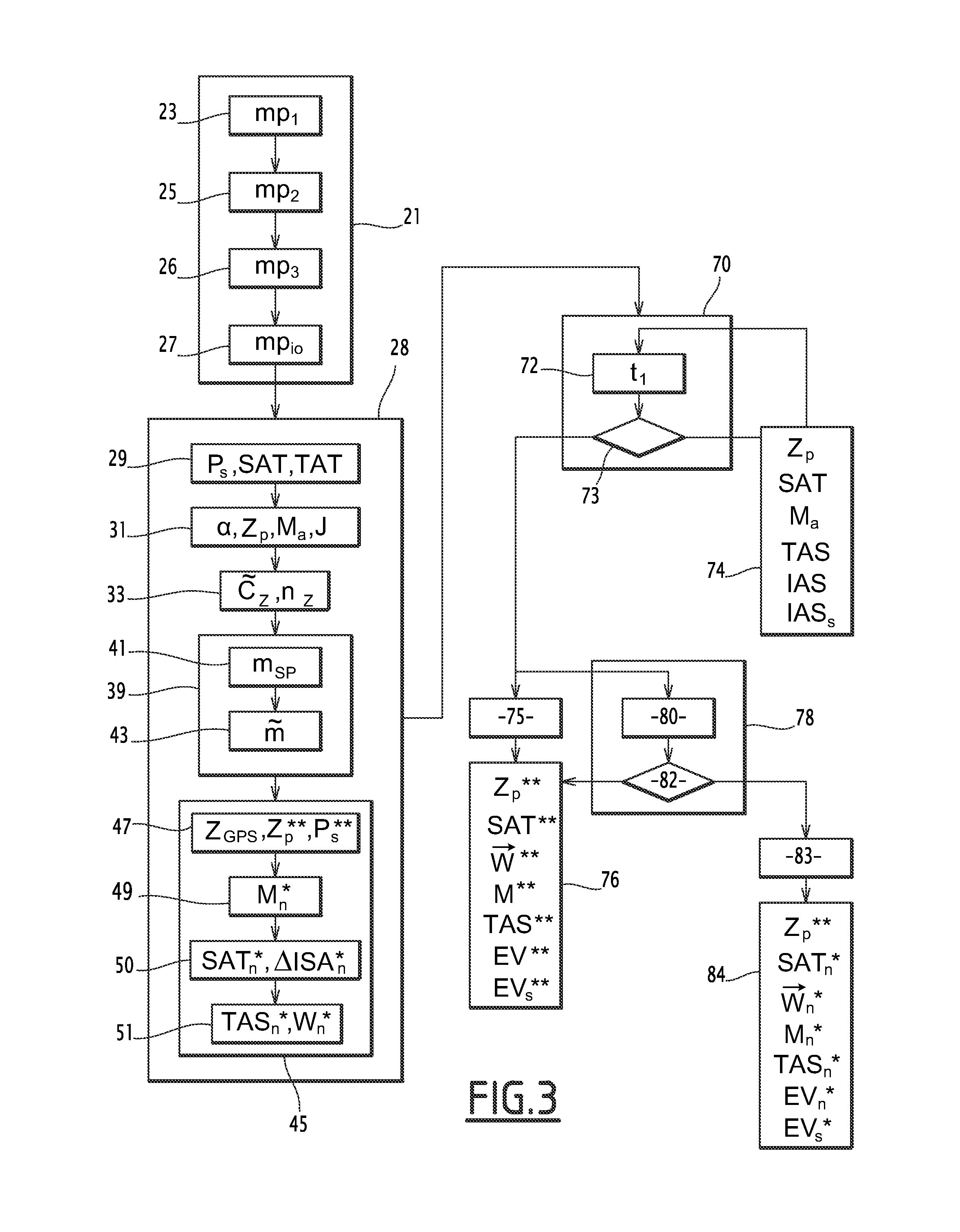Method for determining the estimated weight of an aircraft and corresponding system
a technology of estimated weight and aircraft, applied in the direction of measuring devices, instruments, weighing apparatus, etc., can solve the problems of incorrect measurement readings, mismeasured weight, and inability to perform maneuvers, etc., to achieve reliable and accurate results
- Summary
- Abstract
- Description
- Claims
- Application Information
AI Technical Summary
Benefits of technology
Problems solved by technology
Method used
Image
Examples
Embodiment Construction
[0046]FIG. 1 represents, in a schematic manner, an aircraft 1 in flight to which is applied the method according to the invention.
[0047]The aircraft 1 is represented in FIG. 1 by its sole centre of gravity. Its longitudinal axis is oriented along an axis X, which forms with the horizontal A an angle θ known as the aircraft pitch angle. It moves relative to the air along a velocity vector {right arrow over (Vair)}, that forms with the horizontal A an angle γair known as the flight path angle of the aircraft. The angle α between the longitudinal axis X of the aircraft 1 and its velocity vector is known as the angle of incidence. These angles thus satisfy the relationship: θ=α+γair.
[0048]The true air speed {right arrow over (VP)} of the aircraft, which is its speed relative to the air in a horizontal plane, is linked to its speed {right arrow over (VS)} relative to the ground in this horizontal plane by the velocity triangle in accordance with the relationship: {right arrow over (VP)}=...
PUM
 Login to View More
Login to View More Abstract
Description
Claims
Application Information
 Login to View More
Login to View More - R&D
- Intellectual Property
- Life Sciences
- Materials
- Tech Scout
- Unparalleled Data Quality
- Higher Quality Content
- 60% Fewer Hallucinations
Browse by: Latest US Patents, China's latest patents, Technical Efficacy Thesaurus, Application Domain, Technology Topic, Popular Technical Reports.
© 2025 PatSnap. All rights reserved.Legal|Privacy policy|Modern Slavery Act Transparency Statement|Sitemap|About US| Contact US: help@patsnap.com



